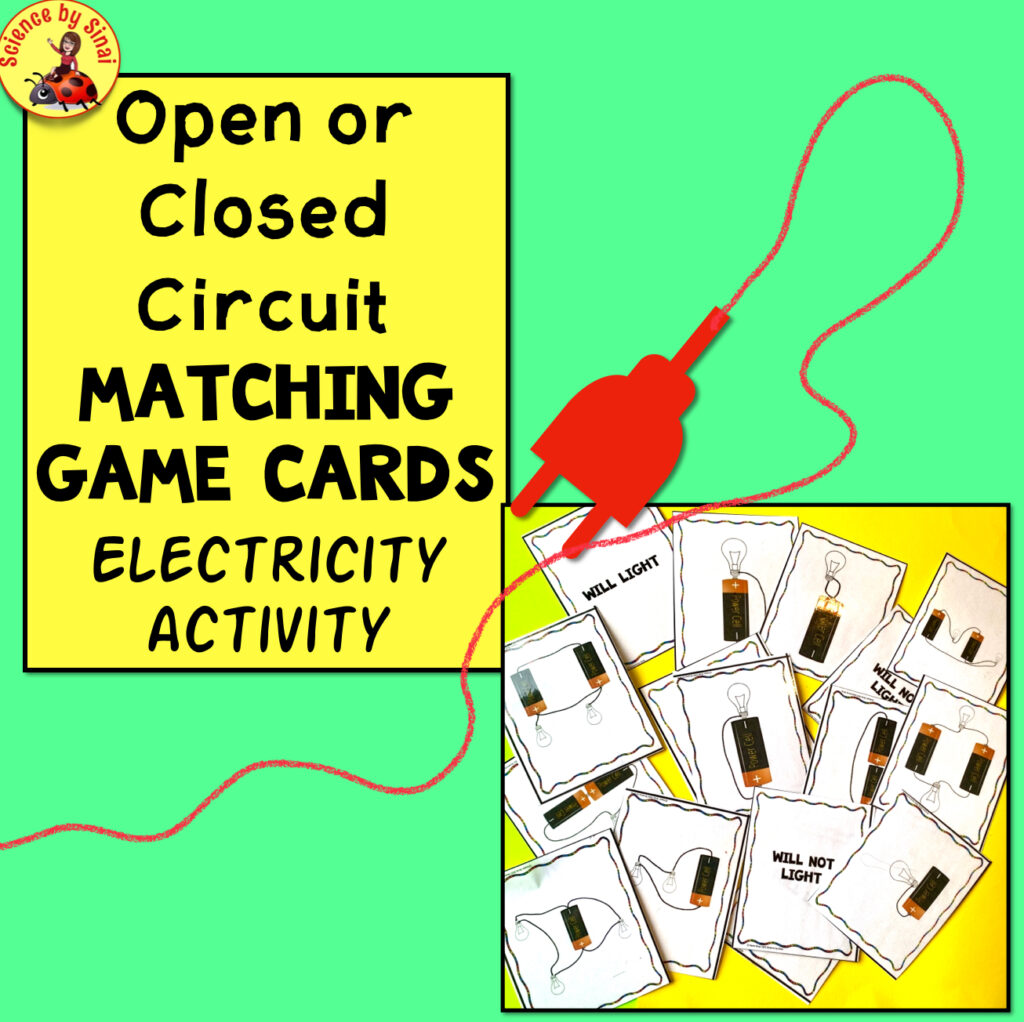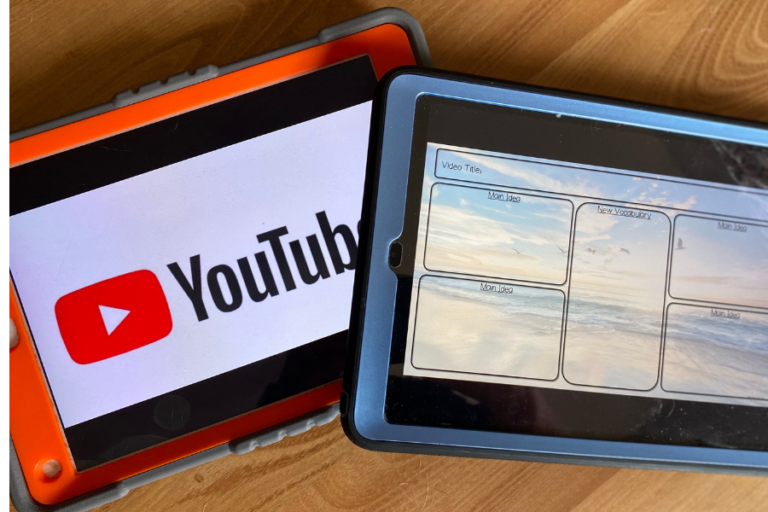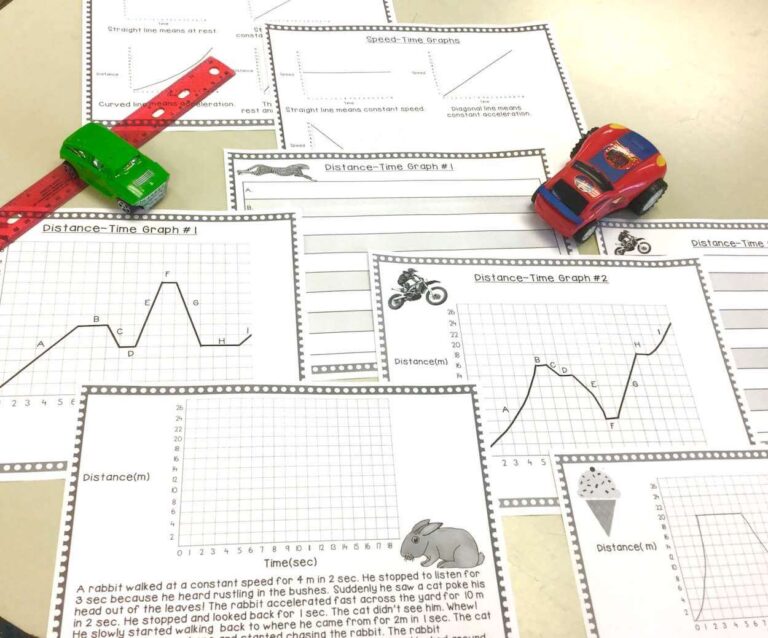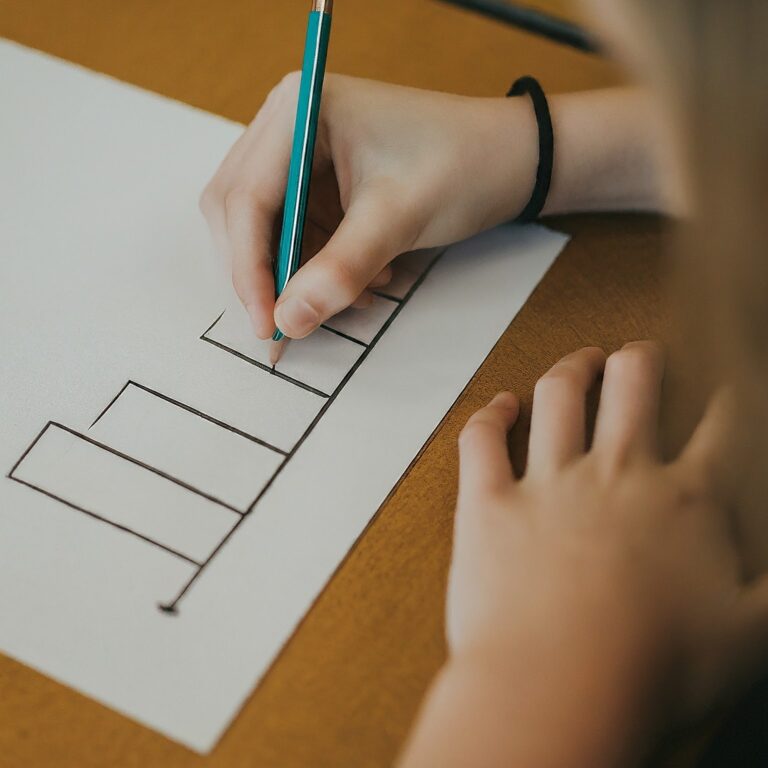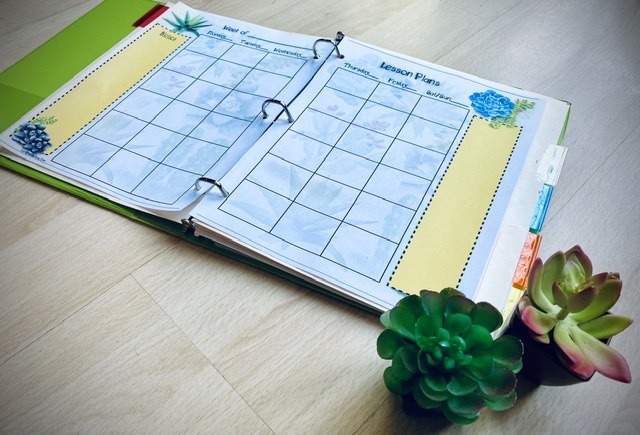How To Create STEM Electrical Circuit Games
Are you looking for a STEM electricity project that solidifies student’s knowledge of series and parallel circuits?
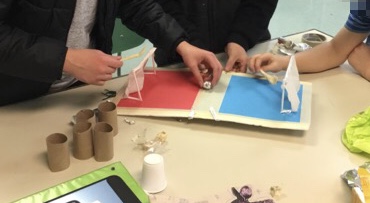
How To Create STEM Electrical Circuit Arcade Games
Updated Feb 14, 2022
Have your students design and create electrical circuit arcade games that they can let younger students come in and play! It is amazing to watch students design and build projects from beginning to end!
What Standards Does This Address?
Although there are no specific standards covering electrical circuits, for some reason, this project does very well for discussions of energy (MS-PS3 Energy) and definitely for engineering.
“MS-ETS1-2. Evaluate competing design solutions using a systematic process to determine how well they meet the criteria and constraints of the problem.”
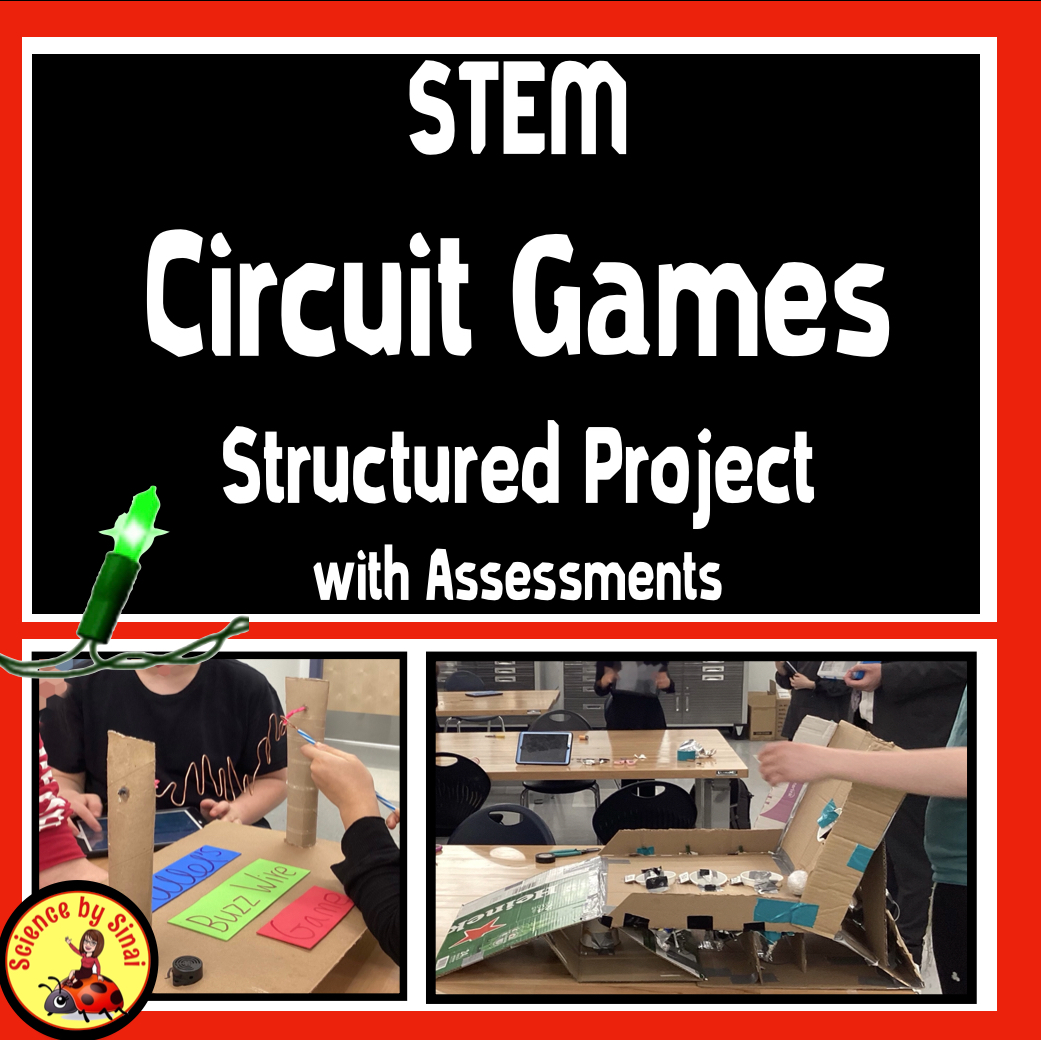
Introducing Circuits
Before students can begin the actual circuit games, they need to do some preliminary electric circuit labs.
My old favorite is starting the unit by simply handing the students a lightbulb, two wires and a battery. I challenge them to light the bulb. No directions! Surprisingly, this can take a while, but the “aha moment“ when they get it is priceless.
I walk around and take pictures of the circuits that they create and then I have them draw it on their iPads or paper.
Now the second challenge. I take one wire away and challenge them to light the bulb again. This really nails down the idea that two parts of the battery and two parts of the bulb must be touched. Again, I have them draw it out. These drawings will help them later as they build their games.
Figuring Out Parallel and Series Circuits
The second day I give them a manila folder, aluminum foil, Christmas tree lights and a battery. I tell them that they are to show me how they would set up a room with two lights and one power source(battery). They should set it up so that if one light goes off than the other one will, too. When they figure it out, I then introduce the word “series” circuit.
On the same manila folder, I then ask them to design a room where there is one power source but the different lights are independent of each other. If they turn off one light, the other light will not be disconnected. Once they figure that out. I introduce the word “parallel” circuit.
Practicing Student Knowledge
Before moving on to the games, I like to use my review sheet. It has students trying to figure out if the drawings of the various circuits will light up a bulb or not. Some of the drawings really make them think! This helps students troubleshoot as they look at circuits in their games in the upcoming days. If time permits, I have them try to re-create the drawings with wires, batteries and bulbs.
Brainstorming the Electrical Circuit Games
I kick off the the electrical circuit games activity by showing pictures of projects from previous years. You could use my examples as an introduction. I sweeten the deal by telling them that we will be inviting a lower grade in to play their games after they are complete. That puts energy and motivation into them right from the beginning!
The students partner off and start brainstorming using my brainstorming form. They also do a rough sketch. I remind them that their sketch will probably be changed several times, throughout the project, until they arrive at the final drawing.
I also let them know that I will be filling out a rubric for their brainstorming session which keeps them very accountable.
Daily Rubrics and Journals to Keep Students Accountable
About seven or eight minutes before the end of each class I have the students clean up and then sit down and fill out their daily journals.
Since I started doing this with my projects, I have seen a huge difference in productivity and time usage! See my blog post called Science Projects-10 Questions to Ask Yourself Before Assigning One.
While they are working I walk around and take photographs on my iPad. At the end of the class, I send the pictures to the students, on their iPads, and they like to put them next to their daily journal in their digital science notebooks.
Build Games with Recycled Materials
I stress over and over again for students to use recycled materials such as cardboard boxes, pieces of foam, parts of toys, etc. I bought a few cheap strings of Christmas lights and cut them apart. (After the projects, we disassemble them so I can reuse them.)
I hit the dollar store for the batteries and they use aluminum foil “wires”. Not only does this save me money for wires, but it also lies flat which makes it easier to manipulate.
Note: Students do need to be careful not to have two pieces of aluminum foil cross each other because it can change the circuit. We can cover the aluminum pieces with masking tape or duct tape.
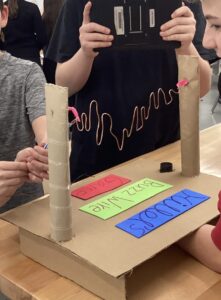
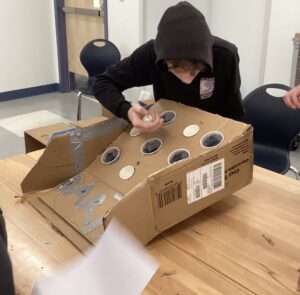
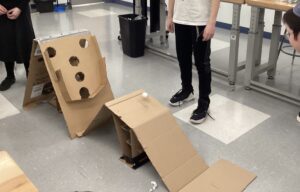
Students Learn to Troubleshoot
The best part of this project is watching the students troubleshoot. They have a very basic knowledge of parallel and series circuits, but they have to push that knowledge to the limit to figure out how to incorporate that into a game.
This year I had students make a pinball machine where a aluminum foil covered ball rolled down and hit a piece of cardboard that was partially covered in aluminum foil. A light was attached to that piece and when the ball hit between the pieces of aluminum foil it completed the circuit and the light lit up! Figuring out how that would work, with the power being on the back of the box, took a lot of trial and error with some serious critical thinking!
Another group made a racetrack that, when a metal magnet crossed the finish line, it pushed down the aluminum foil to complete a circuit and a row of lights lit up. So creative!
Putting Their Games to the Test!
The proudest moment is when the younger grades come in to play the circuit games! We turn off the lights so the lights on the games are more dramatic. The younger kids love it and it makes all of the hard work worthwhile for the older ones.
A Video to Show Off Their Knowledge
As part of the assessment that I do for this project, I have the students make a final video that describes which circuits are involved, how they work and also the rules of the game. They present the movies to each other along with playing each others circuit games. I also use these videos to show the students in the upcoming year.
Self Assessment and Final Rubric
Students have a final self assessment to fill at the end of the project plus I have a final rubric to fill out.
I always show these to them BEFORE they begin the project so they know what they’re working towards.
With all of the daily journals, daily rubrics brainstorm rubric and assessments, this electrical circuit games project comes out to quite a few points! This is great for those students who don’t test well, but do great with these kind of engineering activities.
Looking for science resources? Please visit my store at Teachers pay Teachers called Science by Sinai for hundreds of activities.


